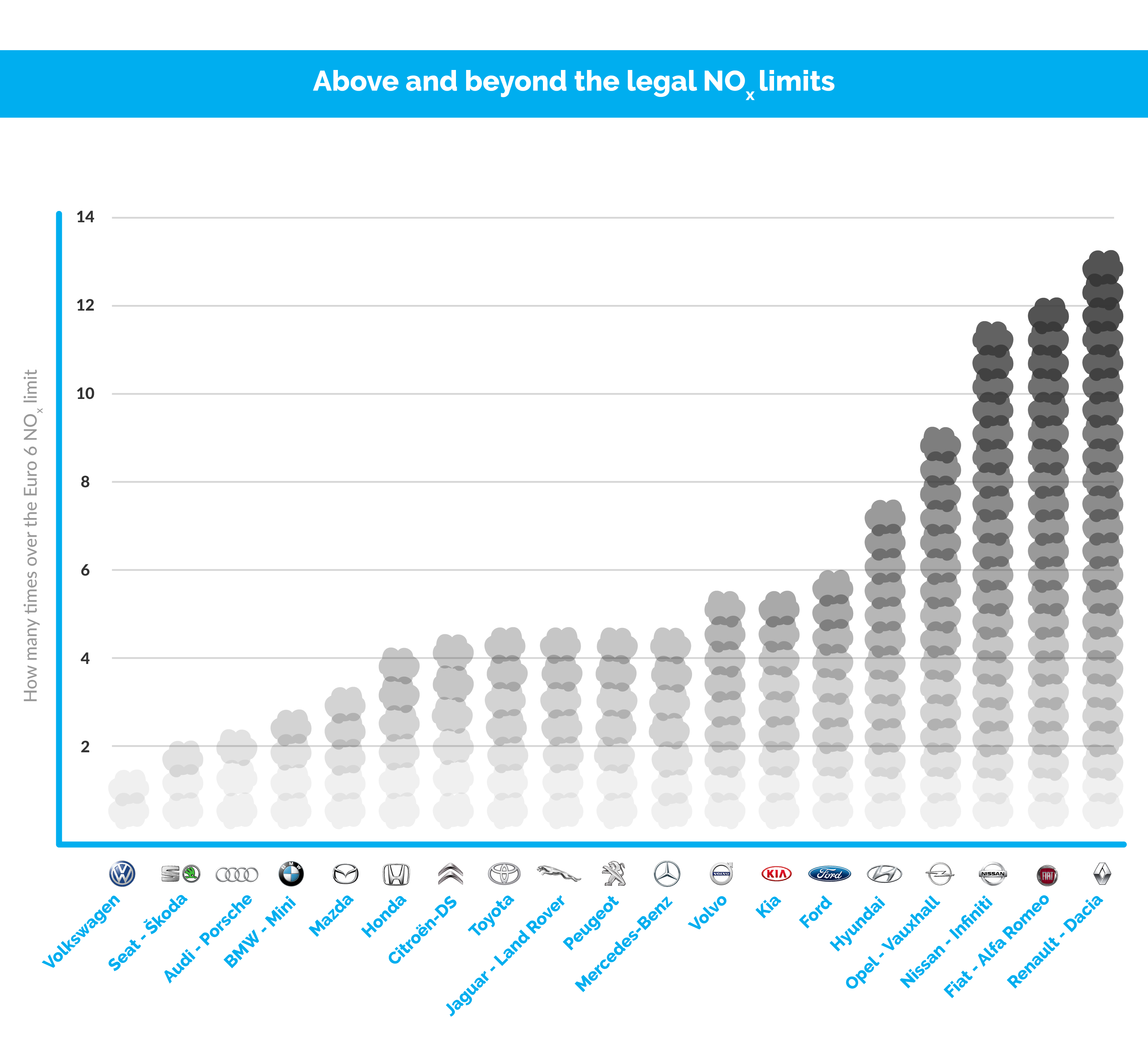Illegal levels of nitrogen dioxide, emitted in cities mainly by diesel vehicles, are responsible for approximately 71,000 premature deaths in Europe, every year. The invisible killer causes lung cancer and heart disease. And 37 million dirty diesel cars and vans were still being driven on Europe’s roads two years after the Dieselgate scandal broke, according to research by T&E. They exceed EU NOx limits by at least three times. Cities across Europe are now even adopting bans on dirty diesels to tackle the legacy of Dieselgate.

But how could this happen? T&E’s in depth investigation, Diesel: the true (dirty) story, showed it had been known for years that diesel engines were dirtier, yet the share of diesel cars grew sharply, encouraged by cheap fuel, low car taxes, and weak emissions controls. By 2015 they accounted for more than half of sales in Europe. This had been exacerbated by the use of obsolete tests – finally updated last year after a long and largely successful T&E campaign – and ineffective regulatory oversight. In addition, biased CO2 regulations set weaker targets for carmakers producing bigger and heavier vehicles – supporting carmakers’ myth that diesels emit less climate emissions than petrol cars. In fact, T&E’s well-to-wheel analysis of vehicle emissions proves that a diesel car over its lifetime emits 3.65 tonnes of CO2 more than a petrol equivalent.
But 2017 offered much hope that Europe can get a grip on the air quality crisis in its cities caused by dirty diesels. September saw the introduction of the new real-driving emissions test for diesel NOx emissions and particulates from gasoline cars, which also threaten the heart and lungs. T&E will continue to push for the test to be improved so it is really representative of how cars are driven today. We are continuing our work with carmaker PSA to develop a test protocol that accurately measures NOx and CO2 emissions in the real world. However, last year another major stumbling block still remained: how cars are approved for sale in Europe and by whom. In Italy, for example, the government’s own Dieselgate investigation allowed Fiat cars to be tested at the carmaker’s testing facility. Leaked documents obtained by T&E showed that other manufacturers’ vehicles were independently tested, but the Italian carmaker used its Turin facilities to pass – and three out of seven Fiat-Chrysler cars were even “exempted” from undergoing more demanding tests. The documents pointed to collusion between a government and its domestic industry champion, and they showed what would happen if ‘type approval’ rules were not tightened up and all enforcement was left to national authorities. T&E’s findings were largely mirrored by the Parliament’s own investigation into the emissions cheating, completed in 2017.
A proposal from a large number of MEPs to establish an EU Vehicle Surveillance Agency, and end the current discredited system, was unfortunately rejected. Unsurprisingly governments from major carmaking countries – notably Germany, Italy and Spain – tried to hold back efforts to strengthen the system of testing and approving vehicles.
“More than two years after the US caught Volkswagen cheating, we can finally say that Europe will have an improved system in place to keep cheaters in check.” – Julia Poliscanova, T&E clean vehicles and air quality manager Forbes, 8 December 2017
In the end lawmakers agreed to grant new powers to the Commission to check cars already on the road to ensure they continue to meet health, safety and environmental standards after leaving the factory floor. There will be new powers to require upgrades or EU-wide recalls when irregularities are found. The new system also requires each member state to check cars circulating on their roads irrespective of where they were approved. But T&E believes the proof of the pudding is in the eating: if the Commission doesn’t keep a tight grip on national car regulators and check their work robustly and regularly, Dieselgate will happen again.
Learn more